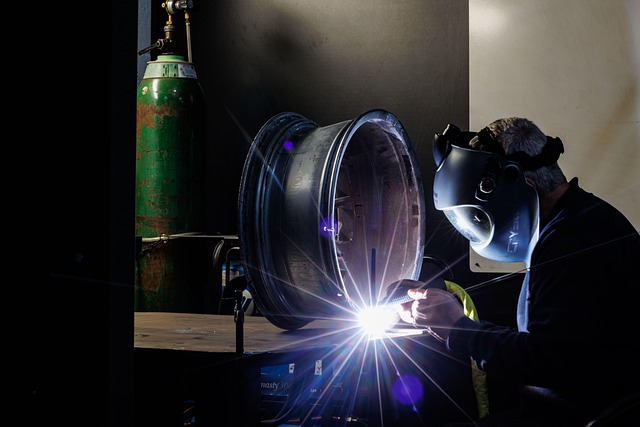Regularly inspect heating system components for moisture and damage, addressing leaks with tools like radiator bleed kits. Before repairs, gather essential tools and replacement parts specific to your system. Turn off power, locate leak near heat exchanger, and replace seals or consult a professional for complex issues. Post-repair, check connections, test controls at various temps, and maintain regular maintenance for optimal heating controls repair efficiency.
“Discover how to fix a leaky valve in your heating system and prevent energy loss with this step-by-step guide. Leaky valves can waste significant energy, increasing your utility bills unnecessarily. Learn to identify the problem area, gather the necessary tools and materials, then follow a straightforward process to ensure efficient heating controls repair. By tackling this simple fix, you’ll not only save money but also contribute to a more sustainable home environment.”
- Identify the Leaky Valve in Your Heating System
- Gather Tools and Materials Needed for Repair
- Step-by-Step Guide to Fixing the Leaky Valve
Identify the Leaky Valve in Your Heating System

Identifying a leaky valve in your heating system is the first step towards preventing energy loss and saving on your utility bills. Start by checking each component carefully, as leaks can originate from various parts like radiators, pipes connecting to heat exchangers, or even the boiler itself. Look for signs of moisture buildup around these areas, as well as any visible holes or cracks that might indicate a breach in the valve’s seal.
Heating controls repair is not always an easy task, so having the right tools can make all the difference. If you suspect a leak, consider using a radiator bleed kit to address any issues with radiators. For more complex systems, especially those featuring electric boilers, regular maintenance checks and timely repairs are crucial. This includes checking for leaks in critical components such as pressure relief valves and heating element connections.
Gather Tools and Materials Needed for Repair

Before tackling a leaky valve repair, ensure you have the right tools and materials on hand to get the job done efficiently. For most standard heating controls repairs, you’ll need basic tools like adjustable wrenches, pliers, and possibly a screwdriver. Materials-wise, gather replacement gaskets or O-rings specific to your system’s valve design, along with some pipeline sealant or thread compound for secure sealing. If your issue involves a more complex heating system cleaning or boiler repair, additional specialized tools may be required. Remember, having the correct components is key to preventing future leaks and ensuring optimal heating performance.
Step-by-Step Guide to Fixing the Leaky Valve

Fixing a leaky valve in your heating system is a straightforward process that can prevent significant energy loss and save you money on your utility bills. Start by shutting off the power to your heating controls, typically located at the thermostat or control panel. Next, locate the leaky valve – often near the heat exchanger or boiler – and assess the damage. If it’s a simple seal replacement, turn off the water supply, unscrew the old seal, clean the area, insert a new one, and tighten the valve. For more complex issues, consult a professional for heating system cleaning and thorough inspection.
Once the valve is fixed, double-check all connections and ensure there are no leaks. Test your heating controls repair by turning on the power and setting your thermostat to different temperatures to verify proper functioning. Remember, regular maintenance, including checking for leaks and replacing batteries in your thermostat (a common thermostat battery backup solution), can keep your heating system running efficiently throughout the season.
Fixing a leaky valve in your heating system is an easy, cost-effective way to prevent energy loss and ensure optimal performance. By following these simple steps and gathering just a few basic tools, you can make a significant impact on both your energy bills and the environment. Don’t let a leaky valve go unaddressed – take control of your heating controls repair today and start saving.
